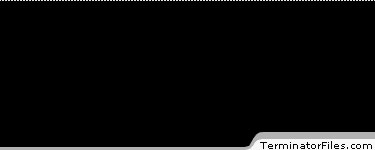Leaving a technological mark on the industry
Date: Unknown
By: Unknown (found on the net)
A new marker
At some point, there appears a 'marker', which turns out to be a predecessor to further developments in the direction that it sets. One such 'marker' were the Terminator movies, which set new standards for special effects. Both The Terminator, but especially Terminator 2: Judgment Day, made use of the latest cinematographic techniques, employing the latest technology available, and in some cases... inventing new techniques and technologies to arrive at the desired results.
Computer technologies
Terminator 2: Judgment Day, released in the summer of 1991, is one of the earliest movies employing special effects which can be called 'modern'. The first two minutes of this film contain more f/x than all of The Terminator, its predecessor which was released in 1984. Whereas older films, such as the Robocop series, tended to use animation for their most exciting scenes, Terminator 2 makes full use of the then-new computer technologies. The most scenic of them, the motif, trademark and selling point of the entire movie, is morphing.
Scenes from the T2 movie
The computer effects creators used Silicon Graphics IRIS 4D/340VGX RISC-processor workstations, on which Alias Studio 3.0 and Pixar's Renderman from Industrial Light & Magic were run. The computer graphics were used, among other things, for the morphing/liquid metal f/x, for putting the pilot's reflection on the T-1000 in the helicopter, and in the nuclear blast scene.
The destruction of Los Angeles after the atomic bomb explosion includes several well-done miniature shots, and one wide-angle shot that is particularly astounding. In it, one can clearly see how the circle of light from the blast widens as it runs from the epicentre toward the outskirts of the city. The shot was created from two separate panoramas of Los Angeles, one during the daylight, and the other one at night. Combined, they produce that powerful effect of a metropolis in nuclear agony.
To create the T-1000 itself, the computer wizards at ILM scanned in Robert Patrick, who played it, and created a wireframe model. Then the metallic texture was applied to it, which by itself wasn't very complicated. What turned out to be complicated, though, was putting the rendered model into the scene environment. Since the T-1000's surface is no less reflectory than a mirror, all surroundings needed to be seen in it. Plus the reflection from the Terminator itself needed to be put onto several shiny objects on the set.
Not a simple as it looks
However, not everything was possible to get rid off so simply. The money that was saved during the bike jump shot on Schwarzenegger's face were still spent on the same scene. Peter Kent did not really jump into the drain, for the motorbike was supported by inch-thick cables, so that when they hit the ground, the bike and rider only weighted 180 pounds. The cables were later digitally erased.
The breathtaking storm drain chase includes some more 'invisible' special effects. Most of the time you see the truck driven by T-1000, you see it mirror-imaged. When the chase was shot, Robert Patrick was sitting on the right side of the truck, steering a huge false steering wheel. At the same time, a real stunt driver was sitting on the left side, covered under a black hood, and using a lowered steering wheel to operate the truck. That was done to allow Robert Patrick to concentrate on acting, and to leave the driving to the stunt person. Patrick was wearing a mirrored uniform. The plates on the truck were also mirrored. After the scenes were digitally reversed, the plates and the uniform appeared correct on the screen. Interesting enough, one of the scenes caught a street sign with some text on it. The text had to be reversed back to be readable.
The mark
Now, after Terminator 2: Judgment Day had paved the way, practically every major motion picture employs the cinematographic techniques. Yet most importantly, thanks to the results that are obtained using the techniques, the Terminator movies not only made a 'mark' on the industry of creating movies, but also on the way we watch and enjoy them.

